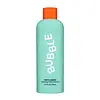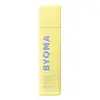What's inside
What's inside
 Key Ingredients
Key Ingredients

 Benefits
Benefits

 Concerns
Concerns

No concerns
 Ingredients Side-by-side
Ingredients Side-by-side

Water
Skin ConditioningCocamidopropyl Hydroxysultaine
CleansingBehenyl Alcohol
EmollientPolyacrylate Crosspolymer-6
Emulsion StabilisingPolyglyceryl-2 Stearate
EmulsifyingGlyceryl Stearate
EmollientPentylene Glycol
Skin ConditioningGlycolipids
Skin ConditioningSphingomonas Ferment Extract
Skin ConditioningAllantoin
Skin ConditioningCeramide NP
Skin ConditioningCeramide AP
Skin ConditioningCeramide EOP
Skin ConditioningPersea Gratissima Oil
Skin ConditioningSodium Phytate
Sodium Lauroyl Lactylate
EmulsifyingPolylysine
Phytosphingosine
Skin ConditioningCholesterol
EmollientSodium Methyl Cocoyl Taurate
CleansingXanthan Gum
EmulsifyingCarbomer
Emulsion StabilisingPhenoxyethanol
PreservativeStearyl Alcohol
EmollientCitric Acid
BufferingTrisodium Ethylenediamine Disuccinate
Polyglyceryl-6 Dicaprate
EmulsifyingEthylhexylglycerin
Skin ConditioningWater, Cocamidopropyl Hydroxysultaine, Behenyl Alcohol, Polyacrylate Crosspolymer-6, Polyglyceryl-2 Stearate, Glyceryl Stearate, Pentylene Glycol, Glycolipids, Sphingomonas Ferment Extract, Allantoin, Ceramide NP, Ceramide AP, Ceramide EOP, Persea Gratissima Oil, Sodium Phytate, Sodium Lauroyl Lactylate, Polylysine, Phytosphingosine, Cholesterol, Sodium Methyl Cocoyl Taurate, Xanthan Gum, Carbomer, Phenoxyethanol, Stearyl Alcohol, Citric Acid, Trisodium Ethylenediamine Disuccinate, Polyglyceryl-6 Dicaprate, Ethylhexylglycerin
Water
Skin ConditioningGlycerin
HumectantDecyl Glucoside
CleansingCetyl Ethylhexanoate
EmollientEthylhexyl Palmitate
EmollientHelianthus Annuus Seed Oil
EmollientDiisostearyl Malate
EmollientArachidyl Alcohol
EmollientCetearyl Alcohol
EmollientPanthenol
Skin ConditioningGlucose
HumectantGlyceryl Stearate
EmollientBehenyl Alcohol
EmollientAvena Sativa Meal Extract
SoothingDipropylene Glycol
HumectantArachidyl Glucoside
EmulsifyingCeramide NP
Skin ConditioningCholesterol
EmollientCaprylic/Capric Triglyceride
MaskingTocopherol
AntioxidantHydrogenated Lecithin
EmulsifyingOryza Sativa Germ Extract
EmollientXanthan Gum
EmulsifyingHydroxyacetophenone
AntioxidantPhytosphingosine
Skin ConditioningAcrylates/C10-30 Alkyl Acrylate Crosspolymer
Emulsion StabilisingSodium Stearoyl Glutamate
CleansingCaprylyl Glycol
EmollientCitric Acid
BufferingEthylhexylglycerin
Skin ConditioningDisodium EDTA
Stearic Acid
CleansingOleic Acid
EmollientMaltodextrin
AbsorbentCetyl Alcohol
EmollientDipotassium Glycyrrhizate
HumectantAstaxanthin
Skin Conditioning1,2-Hexanediol
Skin ConditioningButylene Glycol
HumectantCocos Nucifera Fruit Extract
EmollientLactic Acid
BufferingCyanocobalamin
Skin ConditioningSodium Citrate
BufferingCaprylhydroxamic Acid
Water, Glycerin, Decyl Glucoside, Cetyl Ethylhexanoate, Ethylhexyl Palmitate, Helianthus Annuus Seed Oil, Diisostearyl Malate, Arachidyl Alcohol, Cetearyl Alcohol, Panthenol, Glucose, Glyceryl Stearate, Behenyl Alcohol, Avena Sativa Meal Extract, Dipropylene Glycol, Arachidyl Glucoside, Ceramide NP, Cholesterol, Caprylic/Capric Triglyceride, Tocopherol, Hydrogenated Lecithin, Oryza Sativa Germ Extract, Xanthan Gum, Hydroxyacetophenone, Phytosphingosine, Acrylates/C10-30 Alkyl Acrylate Crosspolymer, Sodium Stearoyl Glutamate, Caprylyl Glycol, Citric Acid, Ethylhexylglycerin, Disodium EDTA, Stearic Acid, Oleic Acid, Maltodextrin, Cetyl Alcohol, Dipotassium Glycyrrhizate, Astaxanthin, 1,2-Hexanediol, Butylene Glycol, Cocos Nucifera Fruit Extract, Lactic Acid, Cyanocobalamin, Sodium Citrate, Caprylhydroxamic Acid
 Reviews
Reviews

Ingredients Explained
These ingredients are found in both products.
Ingredients higher up in an ingredient list are typically present in a larger amount.
Behenyl Alcohol is a type of fatty alcohol (these are different from the drying, solvent alcohols).
Fatty Alcohols have hydrating properties and are most often used as an emollient or to thicken a product. They are usually derived from natural fats and oils; behenyl alcohol is derived from the fats of vegetable oils.
Emollients help keep your skin soft and hydrated by creating a film that traps moisture in.
In 2000, Behenyl Alcohol was approved by the US as medicine to reduce the duration of cold sores.
Learn more about Behenyl AlcoholCeramide NP is a type of ceramide.
Ceramides are intercellular lipids naturally found in our skin that bonds dead skin cells together to create a barrier. They are known for their ability to hold water and thus are a great ingredient for dry skin.
Ceramides are an important building block for our skin barrier. A stronger barrier helps the skin look more firm and hydrated. By bolstering the skin ceramides act as a barrier against irritating ingredients. This can help with inflammation as well.
If you would like to eat ceramides, sweet potatoes contain a small amount.
Read more about other common types of ceramides here:
Ceramide AP
Ceramide EOP
Cholesterol is a class of organic molecules called lipids. It helps hydrate your skin and is essential to having a healthy skin barrier.
Our skin naturally contains cholesterol in the outermost layer. Besides cholesterol, it also contains ceramides and fatty acids. Cholesterol makes up about 1/4 of your skin's outer layer and barrier. Your skin barrier is responsible for keeping allergens and microbes out. Having a healthy skin barrier is also responsible for keeping your skin firm and plump.
Our bodies use cholestrol to create vitamin D, steroid hormones, and more.
Learn more about CholesterolCitric Acid is an alpha hydroxy acid (AHA) naturally found in citrus fruits like oranges, lemons, and limes.
Like other AHAs, citric acid can exfoliate skin by breaking down the bonds that hold dead skin cells together. This helps reveal smoother and brighter skin underneath.
However, this exfoliating effect only happens at high concentrations (20%) which can be hard to find in cosmetic products.
Due to this, citric acid is usually included in small amounts as a pH adjuster. This helps keep products slightly more acidic and compatible with skin's natural pH.
In skincare formulas, citric acid can:
While it can provide some skin benefits, research shows lactic acid and glycolic acid are generally more effective and less irritating exfoliants.
Most citric acid used in skincare today is made by fermenting sugars (usually from molasses). This synthetic version is identical to the natural citrus form but easier to stabilize and use in formulations.
Read more about some other popular AHA's here:
Learn more about Citric AcidEthylhexylglycerin (we can't pronounce this either) is commonly used as a preservative and skin softener. It is derived from glyceryl.
You might see Ethylhexylglycerin often paired with other preservatives such as phenoxyethanol. Ethylhexylglycerin has been found to increase the effectiveness of these other preservatives.
Glyceryl Stearate is a mix of glycerin and stearic acid.
It is used to stabilize the mixing of water and oil ingredients. By preventing these ingredients from separating, it can help elongate shelf life. It can also help thicken the product's texture.
As an emollient, it helps soften skin and supports barrier-replenishing ingredients.
In cosmetics, Glyceryl Stearate is often made from vegetable oils or synthetically produced.
This ingredient may not be fungal-acne safe
Fun fact: The human body also creates Glyceryl Stearate naturally.
Learn more about Glyceryl StearatePhytosphingosine is a phospholipid naturally found in our skin as a building block for ceramides.. It helps moisturize, soothe, and protect skin.
Phytosphingosine contributes to your skin's natural moisturizing factor (NMF). The NMF is responsible for hydration, a strong barrier, and plasticity. Our NMF decreases with age. Increasing NMF leads to more healthy and hydrated skin.
Studies show products formulated with NMF ingredients help strengthen our skin's barrier. Having a healthy skin barrier reduces irritation and increases hydration. Our skin barrier is responsible for having plump and firm skin. It also helps protect our skin against infection, allergies, and inflammation.
Fun fact: Phytosphingosine is abundant in plants and fungi.
More ingredients that help boost collagen in skin:
Learn more about PhytosphingosineWater. It's the most common cosmetic ingredient of all. You'll usually see it at the top of ingredient lists, meaning that it makes up the largest part of the product.
So why is it so popular? Water most often acts as a solvent - this means that it helps dissolve other ingredients into the formulation.
You'll also recognize water as that liquid we all need to stay alive. If you see this, drink a glass of water. Stay hydrated!
Learn more about WaterXanthan gum is used as a stabilizer and thickener within cosmetic products. It helps give products a sticky, thick feeling - preventing them from being too runny.
On the technical side of things, xanthan gum is a polysaccharide - a combination consisting of multiple sugar molecules bonded together.
Xanthan gum is a pretty common and great ingredient. It is a natural, non-toxic, non-irritating ingredient that is also commonly used in food products.
Learn more about Xanthan Gum